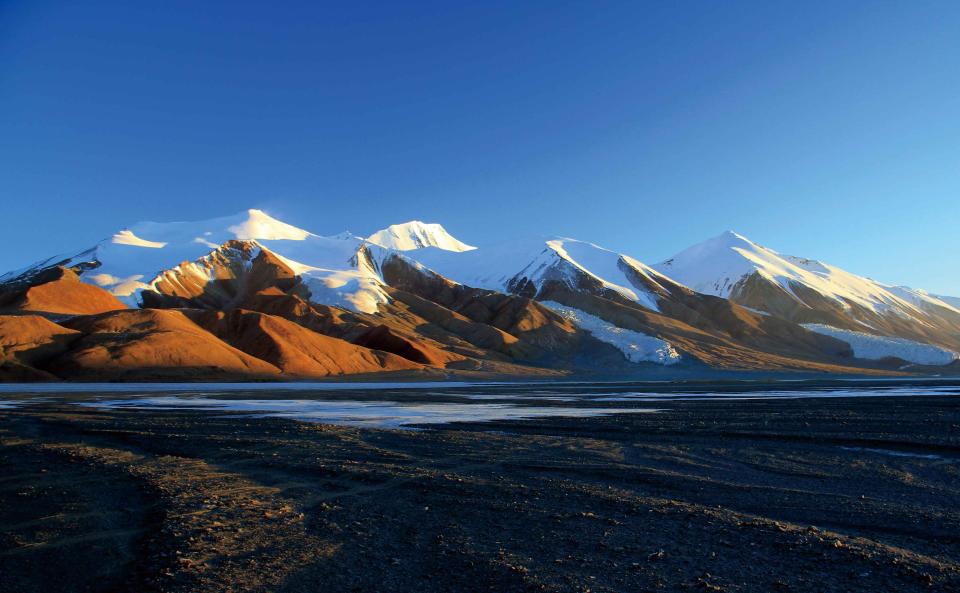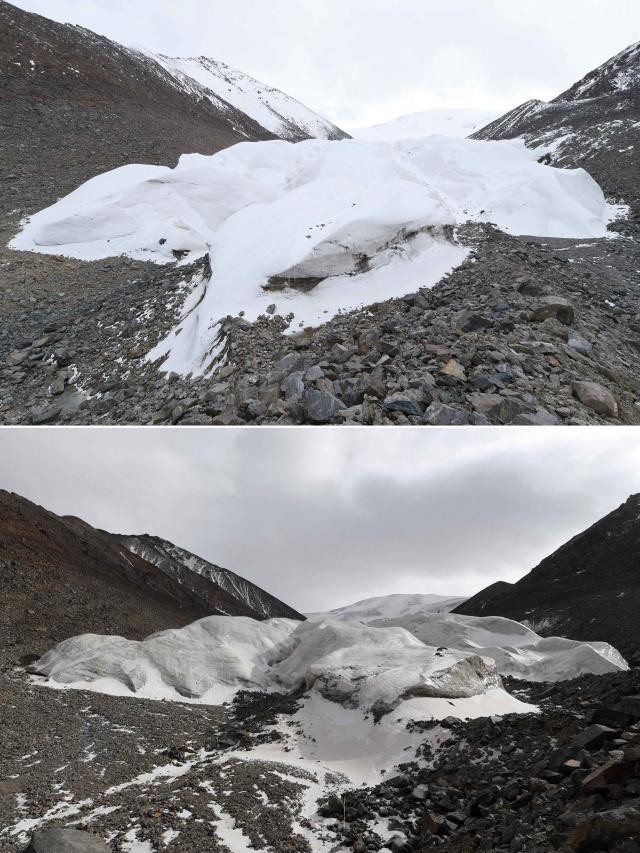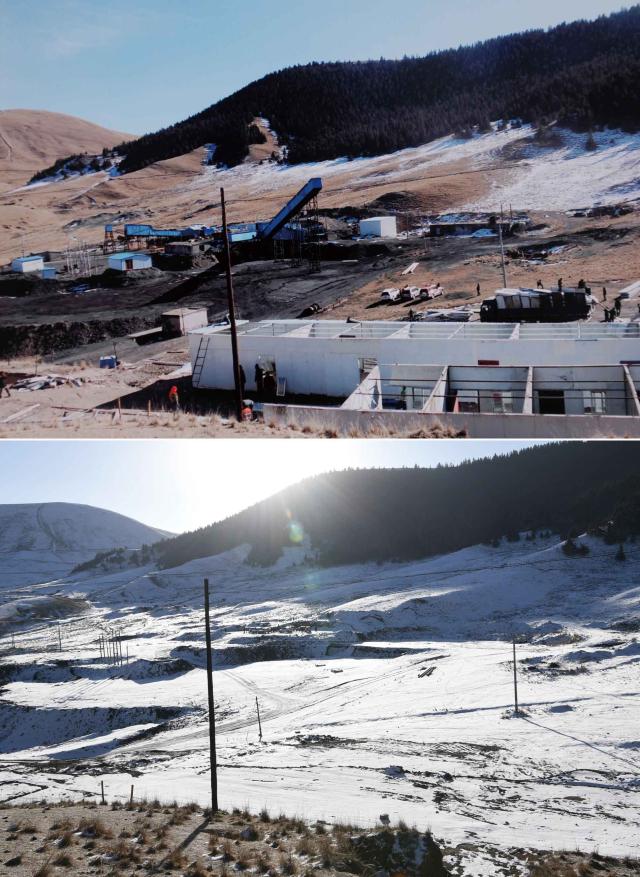China’s central government has rapped officials in Gansu province over a slew of environmental violations in the protected Qilian Mountains Nature Reserve.
An environmental inspection team found evidence of illegal mining, construction and operation of hydropower facilities, excessive waste discharge and polluting emissions by local factories, and said local officials had failed to take measures to protect the park, according to a joint statement issued by the Central Committee of the Communist Party of China and State Council on July 20.
The statement said vice governor of Gansu Province, Yang Zixing, along with two other senior officials must be held accountable for their failure to act. Four cadres, including the Gansu Forestry Administration officer, and the Bureau Chief of Qilian Mountain National Nature Reserve were sacked. A total of 100 personnel were punished, according to Xinhua, China’s official state news agency.
The 800-kilometer Qilian Mountain range borders Gansu and Qinghai provinces in China’s west. In 2014, the size of the nature reserve around it was revised to 2.65 million hectares – an area roughly the size of Belgium. Despite being protected since 1988, hundreds of mines have been dug in the area, along with a multitude of construction projects, all of which have taken their toll.
Ecology studies rarely go viral online. But earlier this year, one did. Authored by Feng Qi from the Chinese Academy of Sciences and Liu Xiande from Gansu Qilian Mountain Water and Forestry Institution, it focused on the deteriorating ecological situation.
Ecological destruction began as early as the 1960s in the form of logging, one of the area’s primary industries. Mining and hydropower followed in the 1980s and 1990s, each carving a different debt from the landscape.
According to official Gansu government statistics, from the 1990s to the early 2000s, there were 532 mining companies in the county of Su’nan alone, which is situated within the nature reserve. Nearby Zhangye city had 46 hydropower stations.
Between February 12 and March 3, the central government sent an inspection team to the area to catalogue the scale of the destruction. They found there were 14 illegal mines in the reserve and 144 mining activities. Hydropower facilities had been illegally constructed and operated. They found 42 hydropower stations inside the nature reserve, and 150 in the surrounding area. Illegal waste discharge and pollution emissions from neighboring factories were their third concern. The fourth was the failure by local officials to rectify ongoing environmental issues.
In September 2015, the State Forestry Administration and the Ministry of the Environment issued a public warning to Gansu officials, ordering them to take action. According to the central government, they did no such thing and failed to meet a 2016 deadline.
But there are further causes of ecological destruction in the area, including tourism and overgrazing. Previous Gansu media reports have disclosed the issue of tourism activities illegally entering protected areas in Qilian Nature Reserve.
The ecological experts earlier mentioned studied the impact of livestock overgrazing. The total number of livestock inside the Zhangye city limits alone stands at 1.06 million, more than five times the official limit of 200,000.
Since 2011, Zhang Tingjun of the College of Earth and Environmental Sciences at Lanzhou University has been examining the vast natural glaciers that form more than 3,500 meters above sea level, and which are the primary source of fresh water in the area, “So far we have not found a single spot devoid of herding and grazing activity. If there is grass, there is grazing. Even the fences we set up for the study have been destroyed by local nomads,” Zhang said.
The Qilian Mountains are a major source of water for agriculture and industry in the Hexi corridor to the north, and the Qaidam Basin to the south. The range forms the starting point of three major river systems that service the region, with a total of 56 individual rivers. The Hexi corridor is part of the historical Silk Road that connected China to Central Asia.
According to Zhang Tingjun, most of the area above 3,500 metres is permafrost, and vegetation plays a key role in protecting the glaciers from breaking down and melting. Generally speaking, high-altitude vegetation can help to store carbon dioxide in the soil, potentially dampening some of the impacts of climate change. “However, mining activity and over-grazing have resulted in the destruction of the vegetation, meaning the soil temperature may increase and cause the permafrost layer to melt.
Furthermore, permafrost deterioration leads to land erosion, landslides and other disastrous impacts on the ecological system, water resources, as well as civil or engineer infrastructure.
Mining has a devastating impact on the ecology and biodiversity of the mountains, continued Zhang, with earth turned up by mining darkening the surface of the glacier on top of the mountains, which accelerates the melting of the snow.
In October 2015, the Western Business Paper quoted Xie Yuxi, a local water expert in Gansu’s Yongchang County, who said Qilian Mountain stores more than 80 percent of the total water resources for the Hexi Corridor region. The global impact of climate change is expected to melt the glaciers there by 2050. According to Xie, human activity will speed up the deterioration of the permafrost, jeopardizing the only source of water for more than 5 million people.
The central government has been aware of the ecological issues facing the Qilian Mountains for some time. In 2015, satellite monitoring showed illegal mining activities in the region. A Ministry of Environmental Protection official recently told China Central Television: “In 2015, we collected remote sensing images from 100 national nature reserves, and found 12 reserves with problems. We publicly called six of the 12 to interview them, gave them a warning. Qilian was one of them.”
The Qilian National Protected Area Management Principles have been revised three times, but still breach the nation’s national regulations. For example, the national standards hold that “10 activities including logging, herding, hunting, fishing, digging, farming, lighting fires, mining, sand excavation, and quarrying are all prohibited,” but in the version for the Qilian Mountains, only hunting, farming and lighting fires are forbidden.
Ma Guolin, a member of the central government inspection team, pointed out: “These three activities have been rare in recent years, but the other seven activities that Gansu avoided mentioning have increased a great deal, and should have been included.”
Ding Wenguang from the Resource and Environment Institute of Lanzhou University told NewsChina that China often stops at environmental policymaking, not moving on to policy implementation, evaluation, monitoring and accountability, as well as public participation.
“The local government’s violation of the national regulations showed the problems inherent in a lack of third-party evaluation, monitoring and accountability. This has resulted in a deviation from the policy,” Ding said.
On July 20, Wang Zhongmin, director of the Gansu Provincial Department of Land and Resources, told China Central Television: “We have violated national regulations, and conducted mining activities inside the protected area – the key issue is that we changed the national regulations from ‘forbidding’ to ‘restricting’.”
Between 2013 and 2016, Gansu’s provincial government did not punish or hold accountable a single person over environmental violations in the Qilian Mountain region.
Wang Xiangchen, deputy secretary of the Gansu government has said publicly that Gansu is an underdeveloped region, and that its economic development relies on mining and hydropower. “Ecological and environmental protection thus give way to economic development,” he has said.
In 2015, Peng Jiting, a local official from Zhangye city told the Western Business Paper that mining income accounts for more than 80 percent of the total revenue for Su’nan County. Various local sources told the reporter that apart from mining, herding is an important measure for local residents to make a living.
There are around 142,000 residents living in the Qilian Mountain Nature Reserve, official statistics indicate. Even in the core zone inside the reserve there are local farmers and nomads. To develop the local economy, pastureland was distributed among nomads, which accelerated its deterioration.
A new TV program broadcast by China Central Television in July claimed that since the 1980s, when the household contract responsibility system was adopted, local residents began to increase their livestock numbers. Despite some central government’s financial incentives which have been paid to local nomads since 2011, the conflict between ecological protection and the local livelihoods remains.
The way Ding Wenguang sees it, collaborative management of the protected area by the local community could be a possible solution. Indeed, community-based conservation has been widely practiced in other parts of China over recent years, emphasizing local community participation rather than regarding locals as enemies of the protected area’s management bureau.
One model they might look to is that of Baishuijiang National Nature Reserve in Gansu. Ding says by adopting certain measures to incentivize local preservation efforts, the relationship between the protected area management bureau and local community has been transformed from conflict to cooperation.
On July 21, the Gansu government announced that all mining, hydropower, and tourism development would cease within the core and buffer zones of the Qilian Mountain Protected Area. By 2018, all mining will be cleared out, and by 2020, all post-mining geographical problems would be solved.
The government also inspected 159 hydropower projects in the region. According to Song Shangyou from the Gansu Forestry Department, the newly revised Qilian Mountain Nature Reserve Protected Area Principle incorporates the seven forbidden activities in accordance with the national protected area principles.
Ding Wenguang cautions that if they are not true to their word, the water resources of the whole region will disappear, and the much-publicized Belt and Road strategy could face a significant obstacle.

 Old Version
Old Version

